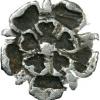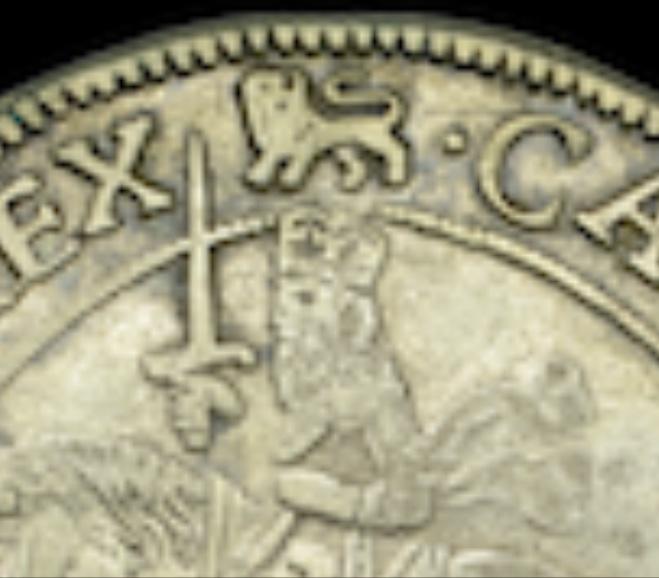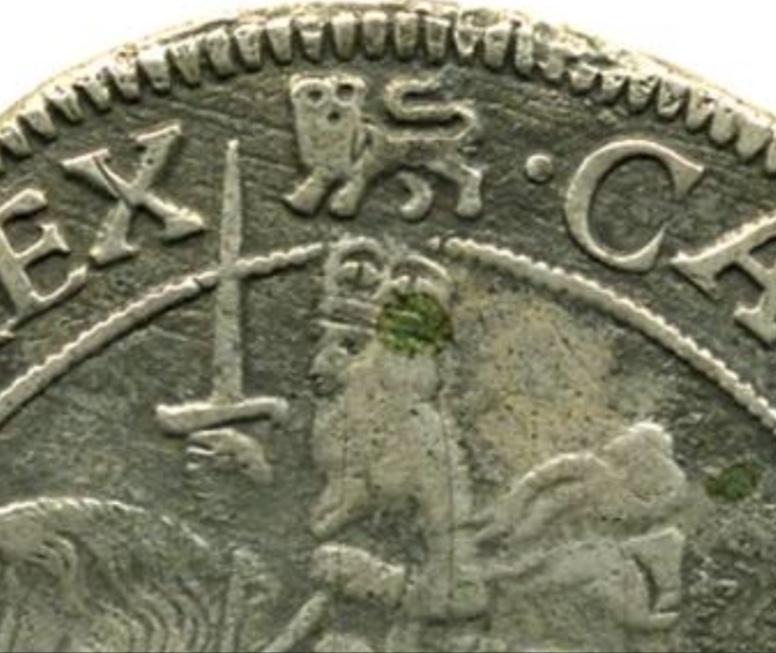-
Posts
7,953 -
Joined
-
Last visited
-
Days Won
129
Content Type
Profiles
Forums
Events
Downloads
Store
Gallery
Articles
Everything posted by Coinery
-

So, Brexit....What's happening?
Coinery replied to azda's topic in Nothing whatsoever to do with coins area!
Re your first point I have no magic wand, but it must surely be a very different position today that the ‘leave voters’ find themselves in, that today they are in a position of putting all their eggs into one basket and just throwing them at the wall, hoping some will survive? We may even find ourselves in a position, if too many break, where a new expression of politics may rise up, as others abandon ship, that leave us with good intentions but no ability to actually govern a country. And the second point, Mafia is a state of being human. You will find it in every aspect of our natures being flawed, whether it’s Europe, or Britain, the school place or the work place. It isn’t cured by walking away, it’s tackled by the desires of people like myself who oppose secularism (not quite the right word, though its replacement isn’t coming to me at the moment for some bizarre reason). The EU for me was an attempt at working together, no matter how flawed it was. However I accept with the ‘them and I’ attitude that most people hold, that it will take a threat from another universe before we will ever join together as one planet. -

So, Brexit....What's happening?
Coinery replied to azda's topic in Nothing whatsoever to do with coins area!
For me it’s maybe a little too simplistic. You see we invest all this time and money trying to make the world a better place for our children (how ever miserably we are failing), plastics, pollution, etc., yet you wouldn’t want to consider the choices we are making in government today in the same way? I’m not saying we should give children the vote, I’m saying that when we are snowballing out of control on generation-long commitments, as it looks as if we are doing so, I just wish it wasn’t the ‘me and mine’ factions controlling what happens to us all. There is a moral responsibility to do the right thing for all citizens, and going blindly into the abyss just because we said we would a couple of years ago is quite frankly the domain of the insane, that this has driven us all into a state of ‘fuck it, let’s just do this thing and get it over and done with,’ is terrifying. edit: I use the F-word not in anger, only as contemporary slang language to express a state of careless abandon. ‘Cor blimey’ just wouldn’t cut it! -

So, Brexit....What's happening?
Coinery replied to azda's topic in Nothing whatsoever to do with coins area!
I would think that too, and with an event as big as this referendum, affecting EVERY citizen of this country for years to come, and possibly for the rest of the lives of those only just entering this world, I’d say the Government has a responsibility to those people too. We aren’t simply changing parties here! -

So, Brexit....What's happening?
Coinery replied to azda's topic in Nothing whatsoever to do with coins area!
I agree, that’s a very odd statement ozjohn. Debate is what’s going on here, and it’s a sensible, easy-to-read, way to present it. I can’t imagine for a second that Rob sees Chris’ arguments as anything other than food for further debate? -
https://davcoin.com/lot/e-auction-29-lot-11
-

So, Brexit....What's happening?
Coinery replied to azda's topic in Nothing whatsoever to do with coins area!
That’s the exact bench I’ve always instinctively sat on, for reasons I cannot always put my finger on, but mostly out of a resistance to the ludicrous and dividing idea that we must ‘take care of our own, first.’ I’ve always wanted the world to be a better place than that. -

So, Brexit....What's happening?
Coinery replied to azda's topic in Nothing whatsoever to do with coins area!
This is interesting viewpoint from Germany. -
Found it! Great resource for images, but you’d need to know your coins first before it could be really useful. It would be a massive undertaking now that they’re up, but having the class and sub-class on the images would be useful. Edit: Ah, got it...click on the image and you get a nice big write up. Well done, Dave, must have taken ages
-
I can’t see any specific pages for the Edwards on his website, though, and the FB link is broken. But I’m modern, I’ll track it down
-
Ha ha, not in the least, just too much time on my hands, that’s all! Is Dave’s page the FB one, I’ve not seen it?
-
Just taking both your points, would a collector in the late 1700s be interested in imitation pieces, as Besley suggests? Unless they were intended to fool back then? Seems a very advanced forgery for the time?
-
Well that’s reassuring at least. When did they get called out? Were they present in any old collections?
-
Mine’s an enquiry into whether these HCs are being bought and sold as genuine, I don’t have any fixed ideas about them, as yet? But they do seem wrong, even with limited insight. What’s your position on them?
-
I’m guessing then that they are all currently being bought and sold as genuine?
-
How many are known?
-
The scores are all wrong though aren’t they, they’re incuse on the flan, and not even present at all on this one?
-
-
Any image handy of those base Yorks?
-
I think Rob may have been referring to die-making standards, as this had been the general tenet of my enquiry, though I’m sure you’ll have an answer regardless 😊 @Rob in view of the die never belonging to a crown I concede to the idea then that the large inner circle is nothing other than poor marking out, whatever the reason for that.
-
Loving the read, Rob, where’s your book? I clearly know very little about all this, but I still get the sense there would be time to ‘do things properly,’ if they wanted to? For someone whose sole job it is to cut dies, would they really make such a glaring error re the inner circle? I can’t get my head around that. Also, if they did, I get the impression there’d be an option to scrap it - I think they would notice the error really early on. Can you think of any reason why they haven’t just used a crown die by accident, or even intentionally, just to make use of them?
-
The 3a die looks to be different entirely, letters and single stop from wire line etc.?
-
So what possibility is there that the die-sinkers stayed in a fixed location, where it would be possible to cut dies without the inconvenience of constant marches (I feel I want to escape the idea it was all so chaotic, and look to other possibilities re major anomalies), where one would assume die making to be a bit of a challenge otherwise? Also smelting plate and turning it into flans on a regular basis would equally seem an impossible task for troops constantly on the march? Is there any value in the idea that dies, once completed, were transported to the source of the plate/flans/troops for use by coiners, or maybe even the plate was horsebacked to a fixed location/mint to be processed and returned to the front line? You’re probably right in what you’re saying, but war efforts can be incredibly organised, logistically speaking, and it would seem to make more sense to keep your die-sinkers and their tools in a safe location away from the perils and risks of frontline troops. Do we know of any die-sinkers being killed in battle? edit to add “once completed” in second paragraph
-
Interesting read, thanks for taking the time. Do we know whether those who strike coins are the same are those who sink dies? It would seem a waste of skilled workers (engravers) employing them to the menial task of hammering out coins.
-
The shilling is compelling evidence but I just can’t buy the idea they’d make the most basic of errors in failing to scribe out an accurate inner circle, given how much more complicated (and time consuming) it would be to lay out legends, etc. if they don’t get these most basic of markings on the stock first? One would presume them experienced enough to realise this? It would even cross my mind to get that bit right, regardless of the rush I was in. As well as cutting punches and repairing/making dies, I would naturally assume, if there was a large turnover, that stocks could be filed and marked out in advance, in preparation to be cut - that would streamline things, surely? Unless this is exactly what they did do, and then someone started cutting a halfcrown onto stock that was prepared/scribed-out for a crown? another thing that troubles me, is I can’t imagine it taking a huge amount of time to cut a die, once the punches are made and to hand, so why wouldn’t they just file and recut/scrap an error die? I know you say time was short, but is there any evidence to say that the die-sinkers couldn’t keep up with demand (die-making, not coins struck)? I have another question, why were stocks ground back and reused anyway? The metal they were made from was hardly an expense, relatively speaking. The time and cost involved to reverse the annealing, and then file off the old design, must surely outweigh the cost of new and ready to roll diestock - or at least make the use of new stocks a negligible expense? Actually I guess the above question is irrelevant in that menial labour could file and prepare new stocks. Though interestingly it should make abandoning an error die an easier process, if perhaps only a half-day or less is lost in the time it takes to cut a new die. I wonder whether hundreds of dies were filed off to start over this way to be honest? I just can’t buy the idea that rushing to make them is the cause for a mis-scribed circle. Or, if it was, they wouldn’t just scrap it when realising, presumably quite early on in the process of punching it all up? Just thinking out loud.
-
So, is your proposal that the reverse was intended for a larger denomination, say a crown, but was never used and, instead, was reclaimed for the halfcrown, OR that the die stock of a larger denomination was ground back and a half crown was cut into it? If the latter, I can’t fathom why they wouldn’t have marked out the beaded borders correctly before cutting the design?



